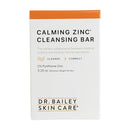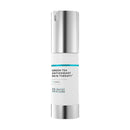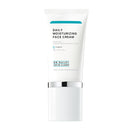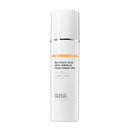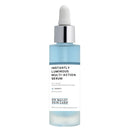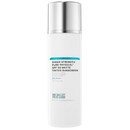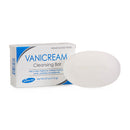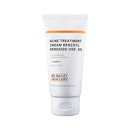The Pros and Cons of Taking Antibiotics to Treat Rosacea?

What are the pros and cons of taking antibiotics to treat rosacea? It is an important topic for everyone suffering from rosacea because rosacea is an embarrassing facial rash that can be hard to control. But, taking antibiotics can lead to the development ‘superbugs’ which are antibiotic resistant bacteria that cause serious life-threatening infections like MRSA. And, dermatologists write more antibiotic prescriptions than any other medical specialty, many times for skin problems that we can’t prove are due to bacteria. So, how do you and your dermatologist balance all of these considerations when your rosacea flares up?
The Pros and Cons of Taking Antibiotics to Treat Rosacea?
- Do rosacea antibiotics create superbugs and MRSA?
- Does taking antibiotics for rosacea damage your microbiome?
- Antibiotics accumulate in the environment
- So, should you use antibiotics to treat your really stubborn rosacea?
- What is a good skin care routine to fight rosacea?
- The bottom line with oral antibiotic treatment of rosacea
Where do antibiotics fit into the treatment of a chronic and poorly understood skin problem such as rosacea – a problem that is not necessarily due to a bacteria ‘infection’?

Rosacea is an inflammatory skin condition. It is not a skin infection and the exact role bacteria play in causing rosacea is uncertain. But antibiotics help control rosacea. We don't really know why but they work and so we use them. That decision is getting a new level of scrutiny.
Over the course of my 35-year career in medicine and dermatology, I’ve witnessed a complete reversal of how doctors and patients view antibiotics. In the early 80s, physicians and patients we were enamored with them and patients felt comforted by getting a prescription for these trusted drugs. That’s changed thanks to superbugs and the human microbiome.
Do rosacea antibiotics create superbugs and MRSA?
Antibiotics create superbugs. 'Superbugs' are bacteria resistant to antibiotics. They have been around for a long time but their existence was not common knowledge until more recently. MRSA (methicillin resistant Staph aureus), the most notorious superbug, was first reported in 1959. Infections from antibiotic resistance MRSA didn’t really explode into a common problem until the 1990 and early 2000 Now the word ‘MRSA’ is so commonly understood that I haven’t needed to explain it to patients for a number of years. As I dermatologist, I know that rosacea and acne antibiotic prescriptions written by my colleagues and I have contributed to the MRSA explosion.
Does taking antibiotics for rosacea damage your microbiome?

Stewardship of your microbiome is a new topic doctors are discussing in the context of writing an antibiotic prescription for you. Friendly germs living in and on your body balance subtle aspects of health including helping your fight obesity, diabetes, asthma and depression.
Antibiotics can alter the balance of these good bacteria and this can have subtle and far-reaching consequences for your overall health that we don’t yet understand. It means that the once common tetracycline prescription for rosacea is getting a new level of scrutiny.
Antibiotics accumulate in the environment.
Then there are the ramifications of antibiotic accumulation in the environment thanks to the abundant medical and agricultural antibiotic usage, antibiotics are accumulating in the environment and aquatic ecosystems. It is another factor to consider in the big picture of how we manage inflammatory skin conditions that may not be due to bacteria. Societies love affair with antibiotics is changing.
So, should you use antibiotics to treat your really stubborn rosacea?
My opinion is that antibiotics still have a role in rosacea management as a last resort; when the complexion is so inflamed and out of control, antibiotics can reign in the inflammation. - Dermatologist Dr. Cynthia Bailey

Skin care, topical prescriptions and lifestyle choices need to be used as the primary management of rosacea - and to maintain remission. Oral antibiotics are invaluable used when all else fails and rosacea is out of control.
New ideas for antibiotic treatment of rosacea.
The new and exciting idea is that oral antibiotics can be prescribed at low, non-antibacterial doses and still work. The National Rosacea Society just wrote a nice article about this.
How do low dose antibiotics treat rosacea?
Antibiotics, including low dose antibiotics, have anti-inflammatory effects that quiet the inflammation of a rash such as rosacea. Dermatologist have used antibiotics for their anti-inflammatory efficacy for years. We use them to treat a number of skin problems that are not known to be related to germs such as bullous pemphigoid, pityriasis rosacea, Sweet’s syndrome, and a bunch of other conditions you’ve never heard of. It's always been hard to explain to patients why an antibiotic works for these conditions, but they do. We think it is the anti-inflammatory action of the antibiotics that work. What all these conditions have in common is that we don’t know what causes them. Similarly, we don't know why antibiotic treatment works. Rosacea included.
Subantimicrobial doses of doxycycline help to clear and control rosacea. Subantimicrobial dosing helps to reduce the development of superbugs. We can expect it will also have a lower risk of altering the beneficial bacteria microbiome community that live on you. It will also reduce the environmental load of antibiotics. Plus, lower dosing means fewer drug related side effects such as the stomach ache all too familiar to anyone that’s taken doxycycline.
Should you use antibiotics to treat rosacea?
In my opinion, only as a last resort and only when you are doing the 4 other important and proven steps to control rosacea.
4 steps to control rosacea without antibiotics:
- a good rosacea fighting skin care routine,
- avoidance of skin care products that trigger rosacea,
- control of the lifestyle triggers of rosacea, and
- effective topical prescription care to control rosacea.
What is a good skin care routine to fight rosacea?
I always build a rosacea healing skin care routine for my patients with rosacea. I consider this both preventative and therapeutic. The goal is to control rosacea and keep it in remission. This routine includes a rosacea-friendly cleanser, a calming antioxidant cream, a rosacea-friendly skin moisturizer and a mineral zinc oxide sunscreen. The overarching concept I use when creating a rosacea skin care routine is four-fold,
- cleanse skin without over drying the fragile skin barrier while also discouraging the Pityrosporum yeast the flourishes on rosacea-prone skin,
- reload the skin's antioxidant reserve,
- protect skin barrier with a barrier supporting moisturizer, and
- prevent UV induced rosacea flares.
I created my Rosacea Therapy Skin Care Kit to take the guess work out of creating a rosacea-friendly skin care routine.
I also teach my rosacea patients to identify and avoid their rosacea triggers. This is really important for controlling rosacea. I like to say that an occasional trigger may be OK but don't do them all at once, such as go on a sunny beach vacation, play extreme beach volleyball while drinking a pitcher of margaritas and eating spicy fish tacos. Your rosacea will flare!
The bottom line with oral antibiotic treatment of rosacea:
Using low dose sub antimicrobial doses are the best choice for intermittent antibiotic use to control rosacea. Controlling rosacea with antibiotics should always be accompanied by a good rosacea skin care routine, the right prescription rosacea topical medicines for your unique rosacea and avoidance of rosacea triggers - as best you can. Rosacea is a chronic inflammatory skin condition that is best treated from as many angles as possible to help control this frustrating and embarrassing rash.


